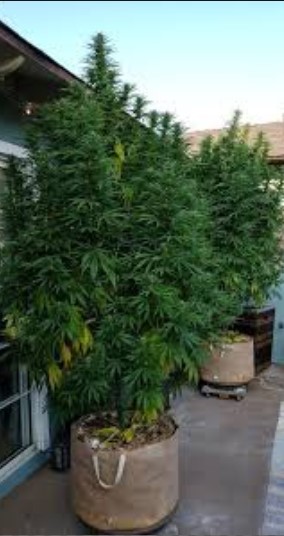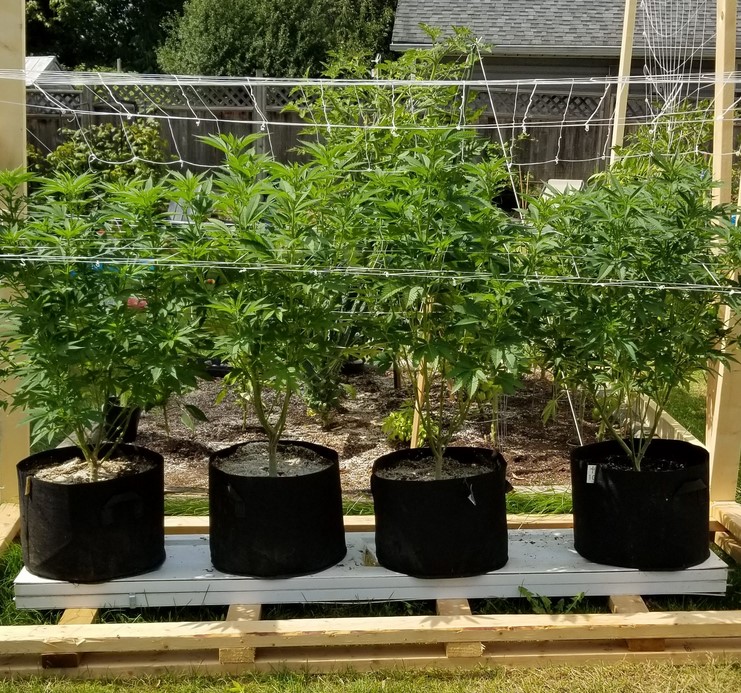Growing cannabis outdoors comes with many benefits. Apart from being a thoroughly enjoyable experience, it allows growers to rear bigger plants with better yields. Read on to learn how to grow cannabis outdoors.
GROWING CANNABIS INDOORS VS OUTDOORS: DIFFERENCES
Growing outdoors usually means more space to work with, plenty of sunshine, free rainwater, better ventilation, and the joy of cultivating in the elements.
However, growing outdoors also comes with a set of challenges. Plants are more vulnerable to pest insects, larger predators, heat waves, and cold snaps.
Growing indoors offers plants more shelter, and cultivators are in complete control of the growing environment. They are free to change temperature and humidity settings, and their plants are more concealed.
With that said, indoor growers usually have less space at their disposal, less potential for massive yields, and have to splash money on electricity bills to run their setup.
Growing cannabis outdoors comes with many benefits. Apart from being a thoroughly enjoyable experience, it allows growers to rear bigger plants with better yields. Read on to learn how to grow cannabis outdoors.
If it’s your first time attempting to grow cannabis, an outdoor option is a good one. For starters, it’s relatively inexpensive; no added electricity or energy costs, ventilation systems or special equipment are needed. Secondly, growing outside gives you the ability to grow big plants that can potentially yield large harvest.
Whether you’re a first-time gardener or not, you don’t have to be an expert to get started – but you do need a well-informed plan. Read on to learn the 7 things you need to know before you grow outside.
Benefits of Growing Marijuana Outdoors
There’s no doubt that growing marijuana outdoors comes with challenges (which we address later on), but it also has a list of cool benefits:

- Eco-Friendly: Indoor growing uses a lot of electricity because it requires so much lighting, not to mention ventilation systems and other equipment. In California, it’s estimated that growing marijuana indoors uses the equivalent of 200 pounds of coal to grow just a single pound. Outdoor growing needs sun, air, water, and minimal equipment for your plants to survive.
- Better Quality Buds: Marijuana that is grown outdoors carries a distinctive flavor and aroma. As long as you choose the right strain, you’ll enjoy every single smoke.
- Low Cost: Assuming that you have selected the right location, outdoor growing offers unlimited sun, fresh air, carbon dioxide, and rainwater. Buy the best seeds, take good care of them, and when they sprout, they’ll need minimal maintenance. Once you learn how to handle pests and inclement weather, you’ll be surprised how easy it is to grow marijuana outdoors.
- Larger Yields: It is common for outdoor marijuana plants to grow nearly six feet tall. Plants of this size offer 500 grams of dried bud. A harvest from just six plants is usually enough to provide you with a year’s supply of premium cannabis.
1. Your outdoor grow should start indoors
Seed germination can take around 2-7 days and should be done indoors, especially if you live in a northern climate. If you’re looking to produce a bigger yield, you’ll need to begin the germination process sooner to give the plants enough time to grow; the bigger the plant, the greater the potential harvest. To learn about seed germination and harvesting time, .
2. Choosing the right location is vital to your plant’s success.
When picking a spot to grow your cannabis plants, take into consideration:
Temperature: Although cannabis plants are adaptive to different weather conditions, they are still susceptible to extreme temperatures. Cannabis plants shouldn’t be grown in temperatures below 12°C or anything above 30°C for sustained periods of time.
Sunlight: Cannabis plants need plenty of sunlight. When picking a location, consider that the plant needs a minimum of 5 hours of direct sunlight and 5 hours of indirect sunlight.
Shelter: Choose a location that allows you to easily shelter your plant from temperamental weather such as strong winds or rain. Or, consider growing in a pot which can be moved indoors if the weather take a turn.
To help protect the plant on colder nights, consider using a hoop house.
3. When deciding on genetics — do your research
When choosing a strain, environmental considerations should be carefully weighed as some genetics are more adaptive to cooler climates while others are better suited for hot and humid climates. For example, sativa and indica have different growing traits: indica-dominant strains are typically more adaptive to colder environments while sativa-dominant strains can be better suited for hot and humid climates.
4. Understand the difference between growing in the ground vs. containers.
Growing in the ground provides the benefits of added nutrients but only if the soil is high-quality. If you choose this route be prepared to test the quality of the soil to ensure it’s adequate for growing. Containers on the other hand give you control over the quality of the soil while providing flexibility throughout the day – allowing you to easily relocate the plants into the sun or shade.
5. Don’t skip the basics when it comes to soil: texture, drainage, water retention
When shopping, look for soil that is light in texture and has a good balance at retaining water. Cannabis plants always need both water and oxygen at the roots to grow. Too much water and the roots can’t get enough oxygen, but not enough water retention and the roots can be damage from drying out too quickly.
6. Avoid one of the most common mistakes made by first-timers – overwatering

When watering the plants, make sure to water thoroughly, then wait until the first one to two inches of soil is dry before you go about watering again. Because tap water can contain high levels of chlorine or dissolved minerals, which can build up in the soil and affect the pH or eliminate valuable microorganisms, it’s advisable to test the water quality or use filtered water instead.
7. Keep a grow journal to track your plants’ progress
Growing cannabis is a learning process, especially when first starting out. Documenting the development of your plants, which may include pictures of the plants at various stages and detailing each step you performed along the way, will allow you to look back and learn from your mistakes, helping to increase the harvest the next time around.
Please note that although it’s legal in Ontario to grow up to 4 cannabis plants in your dwelling-house, readers of this article should review and comply with all applicable laws regarding the growth and possession of cannabis. The content on this article is provided for general information purposes only and does not constitute legal or other professional advice or an opinion of any kind.
Is There a Precise Time to Harvest?
It is impossible to provide a ‘precise’ time to harvest. Most experts believe that you should harvest an indica strain eight weeks after flowering. Sativas usually require harvesting ten weeks after flowering. Strains that come from auto-flowering seeds should take ten weeks to grow from seedling to bud. These are just simple guides, however.
When harvesting outdoors, make sure you have the requisite tools. When it’s time, bring sealable bags. We recommend carrying a holdall if you use Ziploc bags for added security. Cut the marijuana plants into lengths that make them easy to transport. In other words, make sure they fit in your bags!
Congratulations! You have successfully grown a healthy and hearty batch of marijuana. We would love to tell you that it’s time to light up and celebrate. However, there are a few more key things you have to do first. Most pertinently, curing and drying the buds.

This may seem like an odd question but here it goes. I’m growing for myself and was wondering if I do it the old fashioned way. Plant the seed, love it, water it – will it produce or am I just wasting the time?
The only concern i have with the container method is, I’ve tried growing indoors a while back and it ended up getting root rot and dying. Is this simply because it was in a container and didn’t drain the water well? Or was there a factor i wasn’t aware of? I want to know as much as possible before I invest too much on the wrong method.